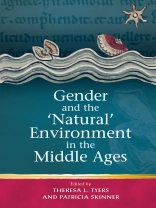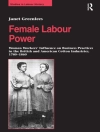The later Middle Ages in Europe c.1150–c.1500 can be viewed as an extensive scientific laboratory, with scholars and other writers producing texts that sought to define and redefine the human body – in relation to its daily work and environment, and in relation to God. This volume draws on written and visual evidence from the twelfth to the fifteenth centuries, placing gender at the centre of its enquiries, addressing the relationship between the human and the ‘natural’ (including the non-human) at a time when new worlds, new texts and new religious experiences were reshaping the individual and collective relationship with the cosmos, and challenging as well as reinforcing established hierarchies.
विषयसूची
Foreword Laura Kalas
1. Introduction: Considering Nature Patricia Skinner and Theresa L. Tyers
WOMEN’S SPACES
2. Intersections of [Un]Nature, Power, and [Dis]Order: The Presentation of Elite Women in Medieval Chronicles Linda E. Mitchell
3. Gendering Treatment: Cupping by Female Practitioners in Late Medieval Visual Culture Jennifer Borland
4. Fracturing Boundaries: Domesticity and Agriculture Practices in a Late Fourteenth
Century Manuscript Theresa L. Tyers
5. Distilling Nature: Raw Materials, ‘Artificial’ Remedies and the Human Body in the Later Middle Ages Elma Brenner
QUEER BODIES
6. Recreating the ‘Natural World’: The Medieval Oyster and her Pearl Diane Heath
7. Amazed and Ravished in the Medieval Garden: The Space of Lesbian Desire in The Assembly of Ladies and The Floure and the Leafe Michelle M. Sauer
8. Monstrous Hybrids, Maternal Sin, and the Concept of Species in Nicole Oresme’s De causis mirabilium Tess Wingard
BIBLIOGRAPHY OF WORKS CITED












